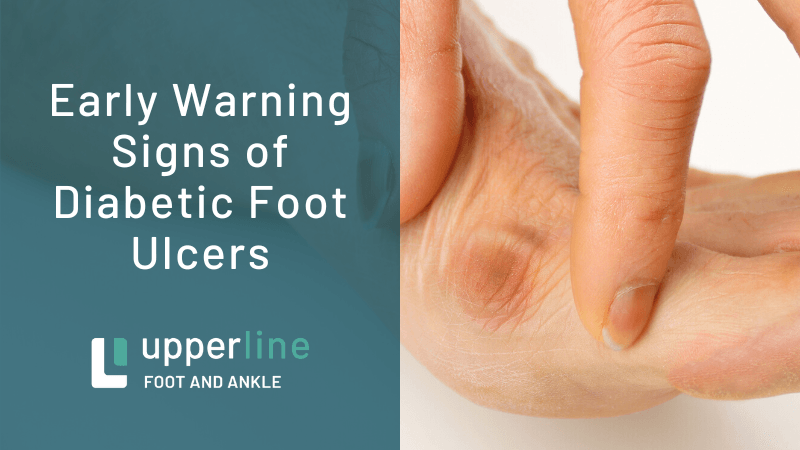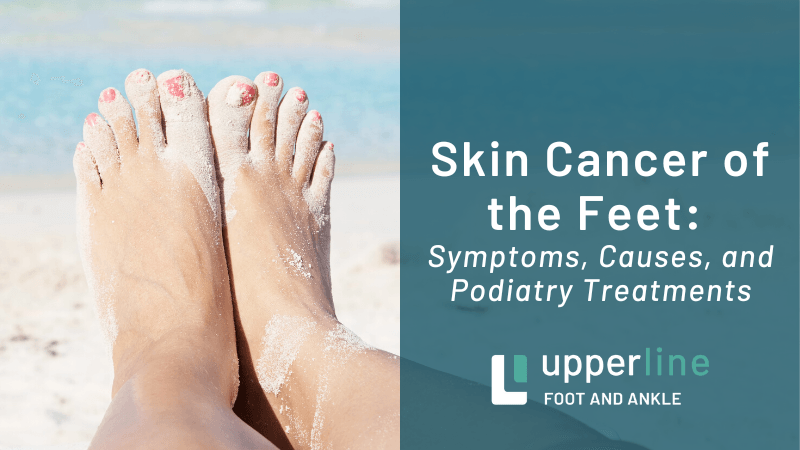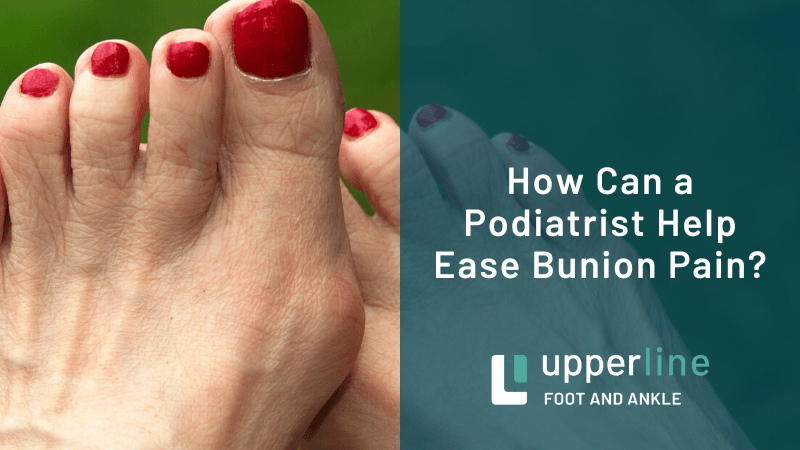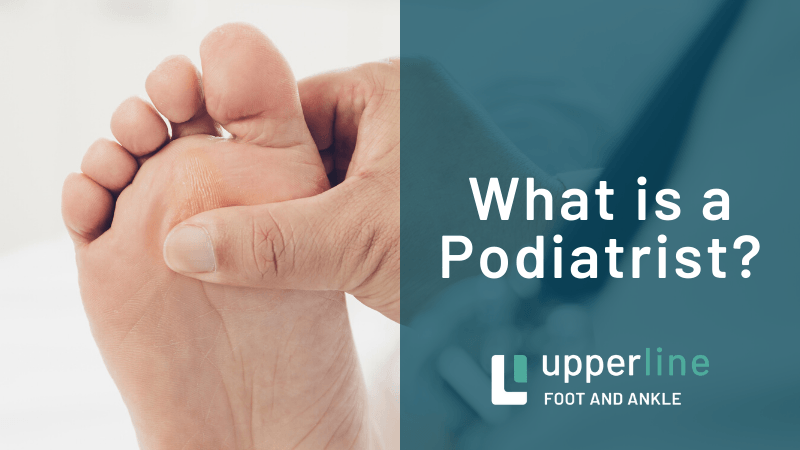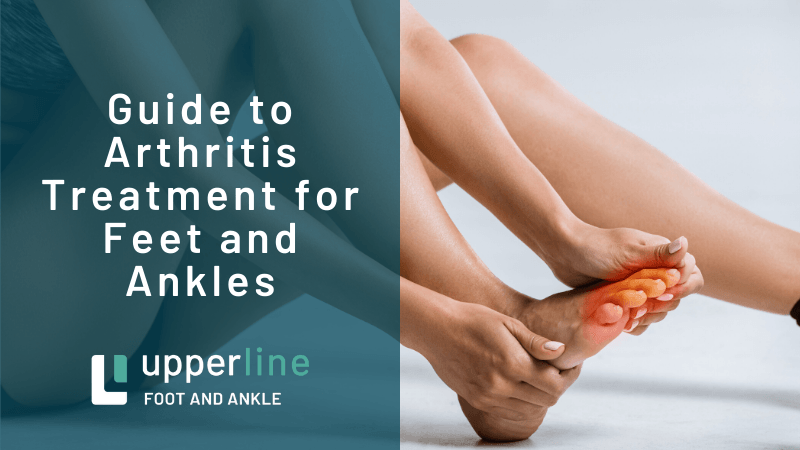Why Neuromas Develop (And What to Do About It)
Maybe you were taking your morning jog, or maybe you were standing in the kitchen washing dishes when suddenly that uncomfortable feeling in your foot started. You thought that a pebble somehow found its way into your shoe only to find it empty and pebble-free. Finally, you realize that even when you are barefoot, the invisible object still seems to be there, right underneath your foot.
No, you are not going crazy! This is a common symptom of a painful foot condition known as a neuroma.
A neuroma can also be referred to as a pinched nerve or Morton’s neuroma. In most cases, this condition will afflict areas between your third and fourth toes where benign nerve tissue begins to grow, causing you to feel pain, tingling, numbness and burning sensations between your toes and in the ball of your foot.
However, pain between the toes while walking is the general symptom associated with a neuroma and this usually subsides if you simply stop the activity and massage the area in pain. This doesn’t mean you should continue to ignore the fact that your feet are in pain just because massages are doing the trick for now – if left untreated, neuromas can turn into bigger problems in the future.
So, let us help you!
Here at Foot & Ankle Associates of Florida, our medical professionals are experienced in treating many lower-limb conditions, including some of those associated with nerve pain. And we have some great tips on understanding neuromas – what exactly are its causes and symptoms, and how can you treat and prevent this condition?
What Causes a Neuroma?
Essentially, anything that causes compression or irritation of the nerve can result in a neuroma. In fact, two of the most common risk factors are wearing shoes which feature a narrow toe box and high-heeled shoes, which tend to force the toes into the toe box.
Of course, if you have or are prone to certain types of foot deformities like bunions or flatfeet, then you are naturally at a higher risk for developing a neuroma. Your lifestyle and habits can also play a huge role in causing this condition – if you habitually engage in activities such as running or court sports, then you are also likely to experience a neuroma.
To summarize, here are some of the most common causes of neuromas:
- Biomechanical deformities like a high-arched foot or flat foot – which, in turn, causes instability around toe joints.
- Improper footwear – which, in turn, causes the toes to be squeezed together.
- Repeated stress – which, in turn, can create or aggravate a neuroma.
- Trauma – which, in turn, can cause damage to the nerve.
Now that you are aware of its causes, you also may be wondering what are the symptoms of a neuroma. Well, let’s get to that!
What Are the Symptoms of a Neuroma?
As we already have mentioned, pain between the toes while walking is the general symptom of a neuroma. Although there are many other indicators you should keep in mind:
- A feeling that there is something in the shoe, or that a sock is bunched up.
- Pain in the ball of the foot whenever pressure is placed on it.
- A feeling that something is inside the ball of the foot.
- A tingling and numb sensation in the ball of the foot.
- Pain in the forefoot and/or between the toes.
- Swelling between the toes.
If you have been experiencing one or more of these symptoms, there is no need to panic! Thankfully, there are some easy and efficient at-home remedies that can offer some much-needed relief for your pain.
At-Home Remedies to Treat and Prevent Neuroma Pain
If you are experiencing pain caused by a neuroma, then you should follow these easy steps:
- Always wear shoes which have plenty of room for the toes to move – laces and buckles are great features as they allow for width adjustment.
- Always wear shoes with thick, shock-absorbent soles, or orthotics which are tailored to your specific structure and needs.
- Avoid (whenever possible) high-heeled shoes over two inches tall – they place unnecessary strain and pressure on the forefoot.
- Rest the foot and massage the affected area whenever you feel pain – this can temporarily alleviate discomfort.
- Apply ice to the area after completing a gentle massage – this will help reduce any potential swelling.
- Use over-the-counter shoe pads – they can relieve pressure around the affected area.
Of course, we understand that even when we take all the precautionary methods available, foot problems are still very much a reality. So, if your pain doesn’t quite seem to subside or go away, the best thing to do is to see a medical professional who can help you nip this problem in the bud.
And, we can help you with that, too!
Our Treatment Options
If you are already experiencing pain, we will carefully evaluate your situation and then create a unique treatment plan to address your specific needs. This will include offering you tips and information so you can take the right steps to keep your nerves healthy and reduce the risk of more problems developing and/or escalating in the future.
Here are some of our most common available treatments used to eradicate neuromas:
- Activity modifications.
- Shoe modifications.
- Orthotic devices.
- Medication.
- Surgery.
Contact Us Today!
We do hope that nerve pain isn’t causing you grief, but we also know these things can happen even to best of us. So, whenever – and if ever – you experience problems with your feet and ankles, make Foot & Ankle Associates of Florida your first point of contact.
For your convenience, we have offices in Orlando, Lake Mary, Kissimmee, Altamonte Springs, and Tavares ready to help you make foot pain a problem of the past! Just give us a call or simply fill out our online contact form to request an appointment today.
Schedule an Appointment
Upperline Health has locations across Florida ready to care for your lower extremity needs.

Upperline Health Florida provides the highest quality integrated lower extremity care to patients in need through a skilled and compassionate team. We strive to deliver care in a consistent and high-quality manner.
Navigation



